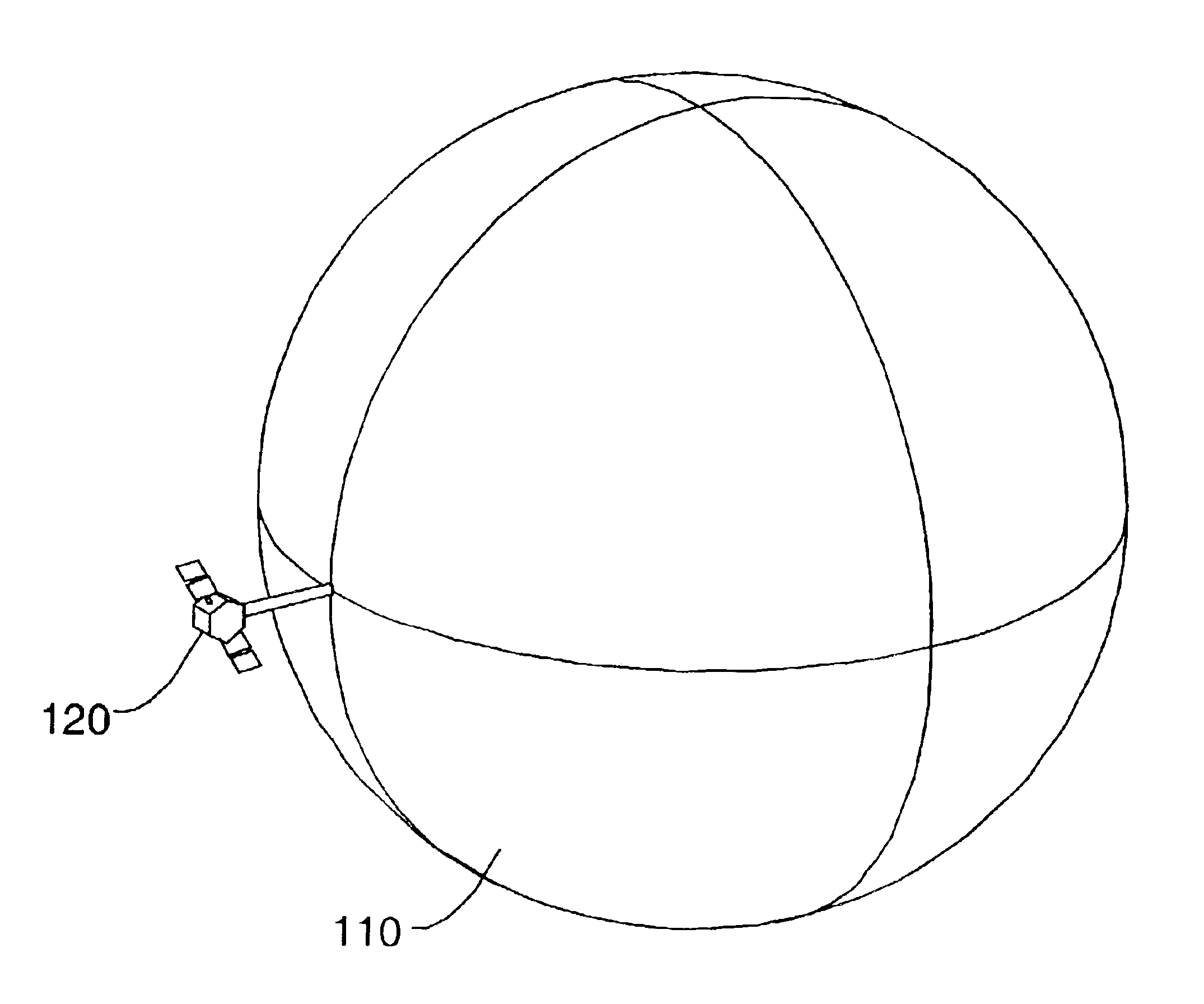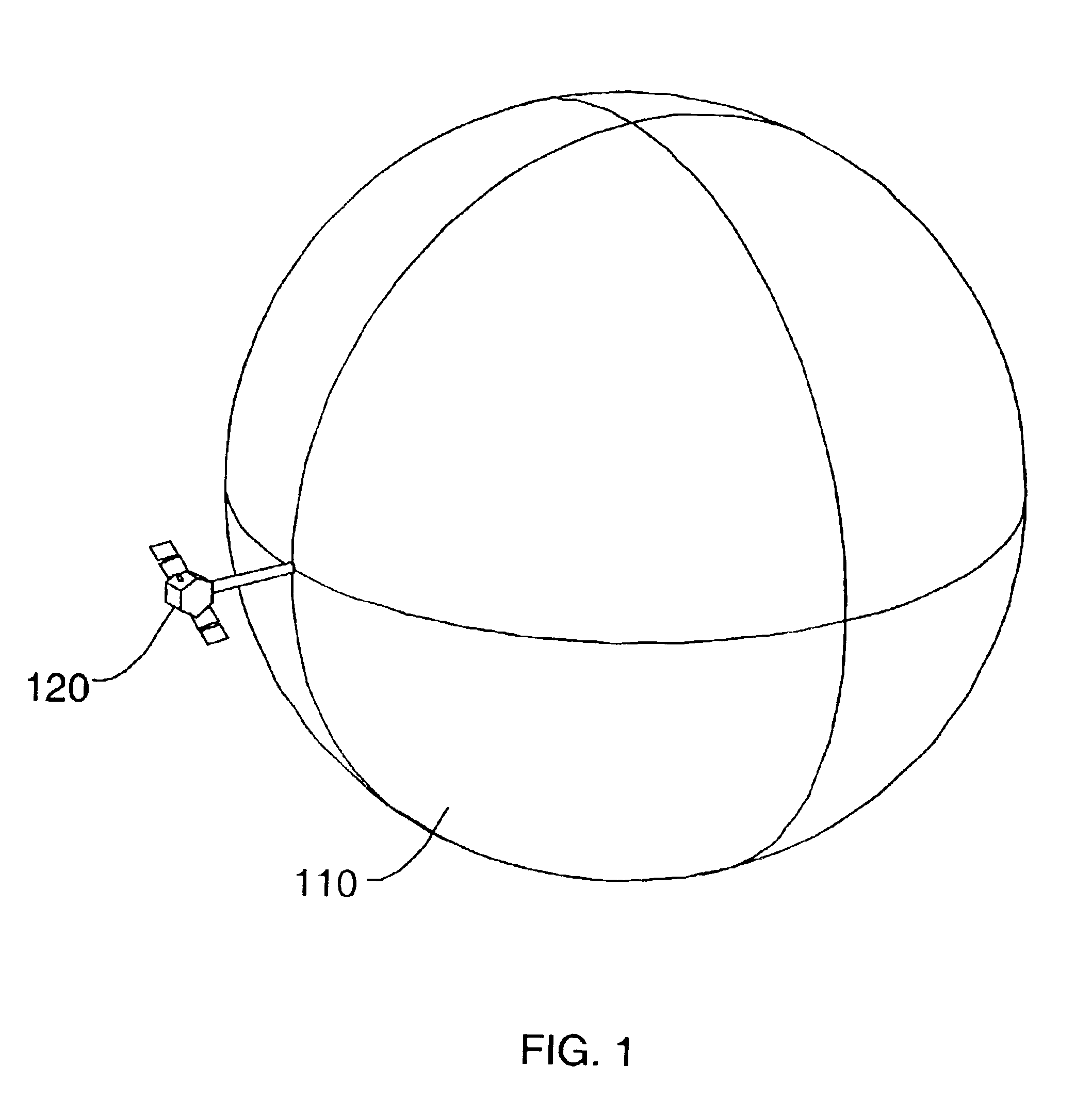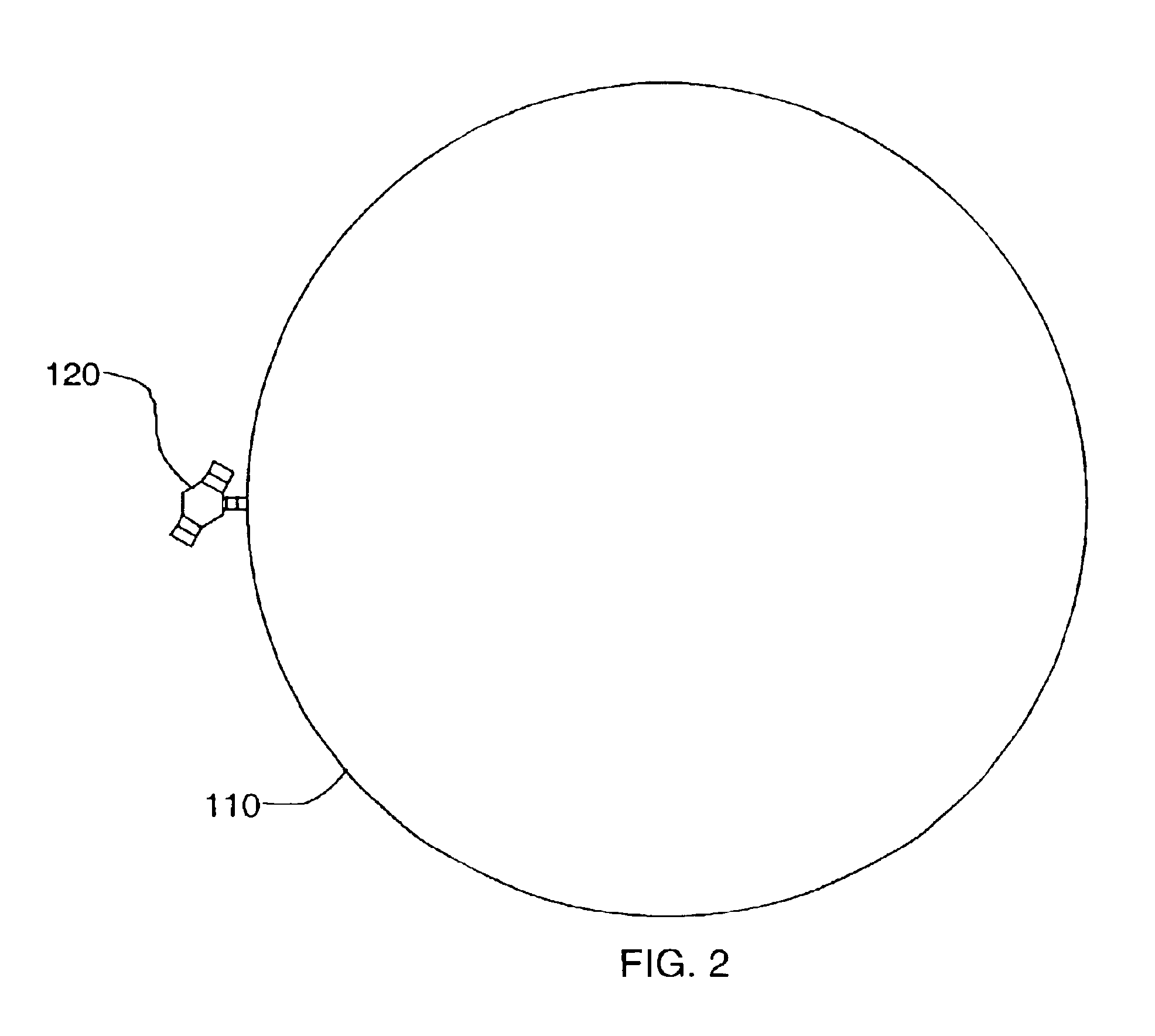Balloon device for lowering space object orbits
a balloon device and space object technology, applied in the field of space objects, can solve the problems of increasing the environment of debris, affecting the re-entry of earth, and growing orbit debris on earth, and achieve the effect of lowering the orbit of space objects
- Summary
- Abstract
- Description
- Claims
- Application Information
AI Technical Summary
Benefits of technology
Problems solved by technology
Method used
Image
Examples
Embodiment Construction
An embodiment of the present invention is shown in FIGS. 1-3. FIG. 1 shows in perspective a fully inflated drag envelope 110 of an orbit-lowering device attached to a space object 120. The space object 120 is shown as a space satellite (with solar panels), but other options include a spacecraft, a space vehicle, a space satellite or a piece of space debris. The drag envelope 110 is shown as a sphere, but the shape could be significantly different. FIG. 2 shows the same system in side view. As shown in FIG. 3, the orbit-lowering device 300 includes the envelope 110, an inflation system 310, a control system 320, and attachment hardware 330.
The drag envelope 110 is preferably fabricated of lightweight but strong thin materials similar to those used for high altitude balloons. For example, the drag envelope 110 can be made of an ultra-lightweight thin film protected against both the atomic oxygen and ultra-violet light environments by a thin coating of metal, oxide, ceramic or some oth...
PUM
 Login to View More
Login to View More Abstract
Description
Claims
Application Information
 Login to View More
Login to View More - R&D
- Intellectual Property
- Life Sciences
- Materials
- Tech Scout
- Unparalleled Data Quality
- Higher Quality Content
- 60% Fewer Hallucinations
Browse by: Latest US Patents, China's latest patents, Technical Efficacy Thesaurus, Application Domain, Technology Topic, Popular Technical Reports.
© 2025 PatSnap. All rights reserved.Legal|Privacy policy|Modern Slavery Act Transparency Statement|Sitemap|About US| Contact US: help@patsnap.com



